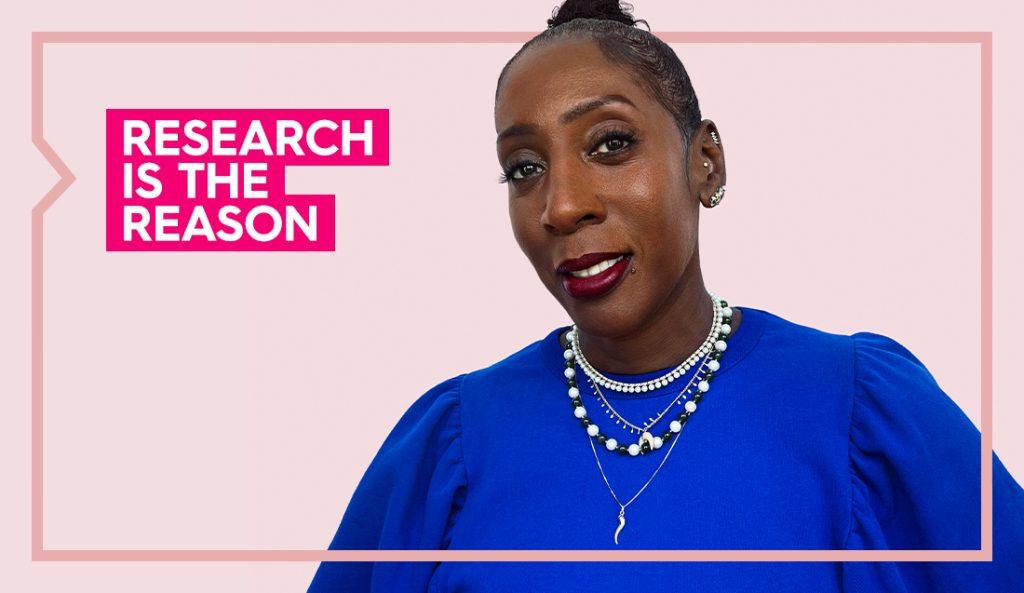Thanks to successful treatment for breast cancer, Tracey Smith was able to refocus on the things in life that mattered most
Back in the early 2000s, Tracey Smith felt a lump in her breast during a self-exam and found what turned out to be a benign fibroadenoma. For the next 10 years, Tracey was diligent about staying on top of self-exams and any changes in her breasts because her doctors told her she’d likely develop another fibroadenoma.
Fast forward to 2014, when she felt another lump in her breast. Tracey (then 45 years old) immediately got to the doctor—assuming she had another benign lump. Her doctor performed a fine needle aspiration, and shortly after, she got the startling news that they had found cancer cells in the lump.
“I was in shock, but I’m a fixer. I went into fix-it mode,” she said.
After more tests and a confirmed stage 1 estrogen receptor–positive breast cancer diagnosis, Tracey got her treatment plan: a lumpectomy and radiation followed by maintenance hormone therapy to reduce her risk of recurrence.
As 2014 came to a close, Tracey got her final radiation treatment in the last days of December and then hopped on a plane for a big, celebratory trip to Tulum, Mexico with 16 of her closest friends.
“I was like: I am not taking this with me to Tulum,” she said. “It was such an incredible trip. Pharrell’s song ‘Happy’ came on one night at the beach and I just cried.”
Reflecting on her experience, Tracey said the hardest part of treatment for her was mental—specifically trying to maintain a sense of normalcy. Having a strong support system of close friends really helped.
“Toward the end of daily radiation, I was tired, but I pushed myself and always had friends come with me and then go for dinner together afterward,” she said. “I tried to wear heels every day to boost my mood in the spirit of Kicked It In Heels, an inclusive online community of breast cancer survivors.”
Breast cancer also pushed Tracey to make some drastic changes in her life. At the time of her diagnosis, she was at the height of her career as head of celebrity talent at an agency in New York City, but she was also incredibly stressed from her job.
“I’ve always lived a full life out loud, but I got louder and became more vocal about my boundaries,” she said. “I became very, very selective about who I work with and what I work on.”
Tracey moved to Los Angeles and struck out on her own in TV and film producing and celebrity talent management, and she leaned into her love of interior styling. Her bigger priorities now are spending meaningful time with her loved ones and focusing on the things she loves—especially travel. A year after she finished treatment for breast cancer, she took a year off to travel around the world.
“That was something that I wanted to do for such a long time, and I was waiting for a partner or a friend to do it with,” she said. “But then I said, ‘Nope, tomorrow is not promised. I’m doing this.’ I traveled around the world for a year, and now I lean really hard into my personal fulfillment.”
Tracey says she’s grateful that research advancements made all of this possible. During treatment, she came to appreciate the battery of genetic and tumor tests that made it so her doctors could give her the right therapy.
“Without research, I probably wouldn’t be here,” she said. “I was grateful that I didn’t have an aggressive cancer, which my doctor only knew because of research. The treatments I received were all backed by research.”
But, Tracey said, there is still so much work to be done to better understand breast cancer in Black women, who have a 40 percent higher mortality rate than white women despite similar incidence rates.
“There’s research that shows that Black women tend to have more aggressive cancers and are diagnosed at younger ages,” she said. “We need to know our bodies, and we need more research.”
Read more stories from BCRF’s Research Is the Reason storytelling initiative here.







